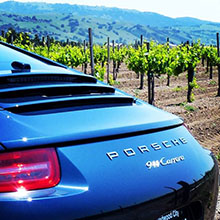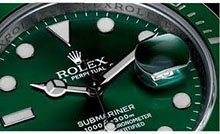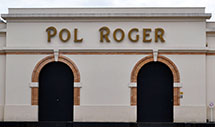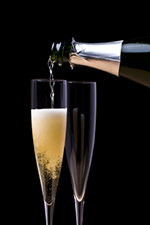|
| |
| Recent Labels |
| |
| Non-Vintage |
|
|
|
|
| |
| |
| |
Pol Roger Reserve Brut Extra Cuvée de Réserve Champagne
Pol Roger Brut Reserve is Pol Roger's house style champagne. This is an elegant personal favorite among non-vintage champagnes. Pol Roger Brut Reserve is produced in significant quantity and readily available in many markets. Ratings, tasting notes, and details are available.
| Pol Roger Brut Reserve |
| Type |
|
|
|
|
| Category: |
Basic |
Prestige Cuvée: |
No |
|
| |
| Ratings (on a scale of 100) |
|
|
|
|
| Champagne 411 |
92 |
Feb. 2014 |
|
Average Retail Price |
| Wine Enthusiast |
90 |
12/01/11 |
|
(750 ml bottle) $57 |
| Wine Spectator |
91 |
12/31/11 |
|
|
|
|
|
|
|
|
Tasting Notes
Appearance: Pale gold with many very fine tiny gentle bubbles.
Aroma/bouquet: Pear, lemon pie, toasted almond, honey, minerality and yeastiness balancing each other.
Palate: Apple, lemon zest, almond, with biscuity notes. Silky mouthfeel.
Additional comments: An elegant personal favorite among non-vintage champagnes.
When to drink: Pol Roger Brut Reserve Champagne is ready to drink at release and for up to 6 years after.
| Brut Reserve Details
Label: Pol Roger Reserve Brut Extra Cuvée de Réserve Champagne
House/Winery: Champagne Pol Roger
Wine Category: Sparkling Wine
Region & Country: Champagne, France
Type (Style): Non-vintage
Sweetness Level: Brut
Dosage: Typically 9 to 12 grams per liter
Prestige cuvée: No
House Style: Yes
Vineyards: NA
Grapes: Typically equal parts Chardonnay, Pinot Noir, Pinot Meunier
Alcohol: 12.5%
Go to Champagne Details for a description of the above types, characteristics, and grapes. |
Pol Roger Brut Reserve
Production
Pol Roger uses the méthode champenoise for their champagne production. Brut Reserve champagne is composed of approximately equal parts Chardonnay, Pinot Noir and Pinot Meunier. The wine rests in the bottle for 3 to 4 years before release. Dosage ranges from 9 to 12 grams per liter. More recent releases tend to be on the lower side. The juice undergoes a settling process (debourbage) at cool temperatures prior to fermentation. Fermentation occurs in stainless steel tanks at cool temperatures. All bottles are riddled entirely by hand.
|





